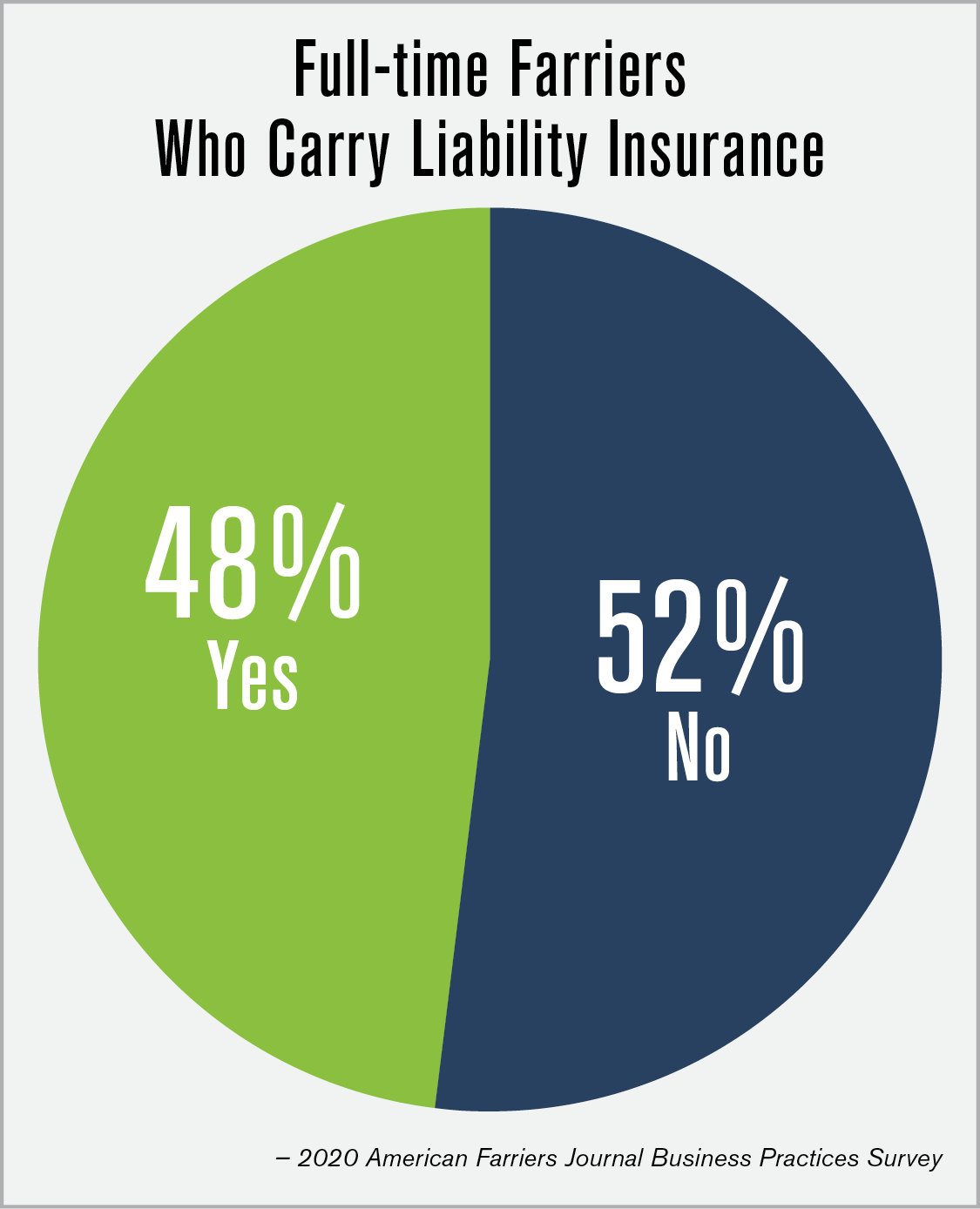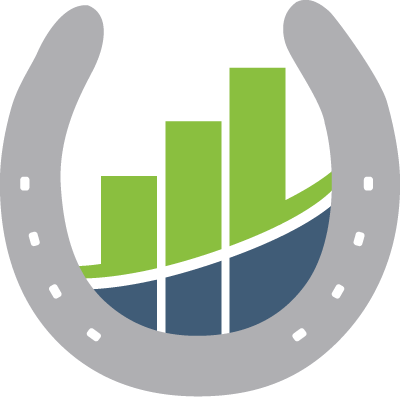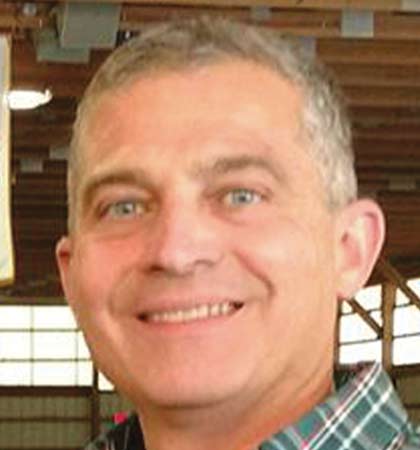Society’s general understanding of the law is often shaped by what we see on television or in movies. The storylines depicted typically start with a search for the truth and end with a sense of justice served. In the real world, the law is not nearly as black and white; in fact, much more often, it’s shades of gray. Having completed law school before becoming a farrier, I have a deeper insight into the types of legal issues that may arise in this line of work and ways we can avoid them.
Farriers, by the nature of our chosen profession, are exposed to a lot of liability issues that could result in litigation. Every day we travel many miles on the roads, use dangerous tools and equipment, haul trailers, work with unpredictable animals in environments where bystanders are likely coming and going. In addition, we enter into contractual relationships and we’re increasingly using apprentices and helpers. For these reasons — and because litigation is expensive and time-consuming — we must become aware of the types of situations where liability might arise. When we can anticipate liable situations ahead of time, we can determine the best course of action. This could include collecting documentation and photographs in the event that liability might arise or avoiding the potentially bad situation entirely and just walking away.
Where Does Liability Come From?
Liability finds its origins in one of four types of laws: common law, constitutional law, statutory law and regulations.
Common law comes from actual court cases. When a case is heard, different facts and circumstances will be applied to different liability issues and an outcome, a judgment will be handed down in court. We can always consult cases and look at similar facts and situations and see how the laws were applied.
Constitutional law governs the systems of public administration and is likely to apply to a farrier that works for a public body such as a university or a police department.
Statutory laws are federal laws — think IRS — that could create liability for us, as well as state laws. Every state, for example, has a different definition of what constitutes veterinary medicine and we as farriers should be familiar with that. If we cross that line we would be dealing with statutory liabilities.
Regulatory agencies are our fourth source of liability. These are considered the fourth branch of government and are the bureaucracies that are created to carry out the laws established by our state or federal government. The Bureau of Land Management and racing commissions are two examples.
Liabilities You Must Anticipate
There are several liabilities that you must anticipate as the operator of a farrier business but the most common is negligence.
Negligence is defined as an unintentional act committed by an individual that injures another person, property, or a reputation. Examples of negligence include farrier malpractice, failure to supervise apprentices, property damage — accidentally backing a truck into a barn, for example — and product liability, which comes from new ideas that farriers might come up with and try to implement with negative results.
Elements required to prove negligence include duty, breach, cause and damages. If one of those is not proven, then negligence would not be found.
Duty refers to the relationship between parties, especially a relationship in which we owe the other party a certain amount of care; for example — the farrier to the horse or a doctor to a client. Breach is simply failure to perform one’s duty. To establish duty, you need a standard in the industry as a base of comparison. In court, this translates to how your behavior in a situation falls short of what a reasonable, caring, diligent farrier would do in that same scenario and it must be proven how that behavior caused documented damages — not some other extenuating circumstances. If there are no documented damages, there isn’t a case.
Failure to document damages is a mistake that farriers often make when they find themselves in a situation where they could pursue litigation, such as being injured on the job. Going to the doctor and recording lost wages are two simple steps to create documentation that supports damages resulting from an on-the-job injury.

Defending Yourself Against Negligence
While it’s always better to anticipate liabilities rather than be put in a situation where we have to defend ourselves, we do have ways to defend ourselves if faced with claims of negligence. The best defense a farrier can have in a given situation will depend on the legal origin of the liability.
In common law, all elements of negligence must be proven. If someone cannot prove that that there were monetary damages and loss, for example, we would not be negligent. Another defense in common law is the assumption of risk. If the activity is so dangerous — for example, whitewater rafting — the risk is assumed by the participants engaging in the dangerous activity and negligence cannot be proven. Farriers with apprentices and associates are not only liable for their negligence, but also that of their employees. The exception is if employees were behaving beyond the scope of their job, which is legally defined as ultra vires acts. For a farrier, an example of ultra vires acts would be an apprentice getting into their car, leaving the barn and causing some damages. We are not responsible for that.
Contract law gives us a way to anticipate liability, as well as provides us a defense if we have one of the following contracts in our hand:
- Waiver of Liability.
- Informed Consent Agreement.
- Assumption of Risk Agreement.
- Indemnity Agreement.
- Independent Contractor Agreement.
It’s important to remember that these are contracts, so the essential elements of a contract must also be kept in mind. All contracts should be clear, with a label identifying what it is and it needs to be signed by the parties involved, and the parties need to be of legal age.
A waiver of liability, informed consent agreement and assumption of risk agreement, are documents that one might sign before going horseback riding, for example, in which a participant acknowledges the activity in which they are about to engage is dangerous. These could be used in the common law defense of assumption of risk.
Indemnity agreements are a way to shift liability. For example, I was shoeing horses at a university and they required that the farriers sign an indemnity agreement. What that means is even if the school is held liable, if there are monetary damages the farriers had to indemnify them and pay for the damages. That is a situation where the reward for the farrier may not outweigh the risk.
An independent contractor agreement is another great way to shift liabilities. Rather than a farrier hiring an employee, which creates a situation in which we could very likely be responsible for all their acts, an independent contractor agreement gives us some protection from liability of other people.
Statutory law liability defense may vary from one state to another. Some states they do apply comparative fault and share the responsibility by assigning percentages of fault. There are also immunity statutes. One that most farriers are probably familiar with is the equine immunity statute, in which barns can post a sign that riding horses is dangerous. Then there’s always procedural noncompliance, which means if there is a negligence case and the people involved don’t follow proper procedure, we are not going to be held liable.
Intentional Liability
Negligence we have defined as unintentional acts. That word — “unintentional” — is an important part of the equation because very often we are liable but we didn’t intend to be. Conversely, intentional liabilities are those actions that are done on purpose. There are a lot of intentional liabilities, but there are a few in particular that I have seen arise in the farrier industry, specifically assault and battery. You wouldn’t think that is something that would happen but it’s more subtle than meets the eye.
Assault, you might be surprised to learn, doesn’t require physical contact. It is an intentional act that causes reasonable apprehension of imminent offensive contact on the behalf of the individual. No actual physical contact is required. For example, if a hot-headed, unprofessional farrier gets in the face of a horse owner and that horse owner feels that there is going to be imminent or offensive contact — that is assault and we are liable and we can be sued. Assault also has a criminal counterpart if the deputy sheriff is called.
There are several liabilities that you must anticipate as the operator of a farrier business …
Battery, intentional conduct that causes harmful or offensive contact without consent, takes it one step further. This has much wider breadth. For example, if you grab someone’s shirt and yank on it, that can be construed as battery. If you bang on the hood of someone’s car, screaming and yelling, that is contact and is considered battery. This is why it is very easy to cross these lines and find yourself liable for assault or battery.
Defamation is another intentional liability. It is a false statement that damages the reputation of another person. For defamation to occur, the speaker must be aware of what they are saying is false and the defamed party must prove damages. There are two types of defamation. The first is libel, which is the written or printed word — Facebook would be one example. The second is slander, which is spoken — YouTube. Historically there are a couple of examples of defamation that have been held in the courts to be so bad that you don’t have to prove damages. These are:
- Accusing persons of crime involving moral turpitude.
- Referring to persons as incompetent in their ability or conduct in their
profession. - Accusing a person of having a loathsome disease.
- Accusing a person of sexual misconduct.
I remember when I started out there were a lot of farriers who would bum-rap the work of other farriers when they should have just taken the high road and acknowledged they don’t know what the farrier before them had to work with. It’s really easy for damages to be added up in that scenario and a case can be made for defamation.
A newer liability being tried more often is intentional interference with business or contracts. It’s a situation where there is a valid contract between parties, the defendant knew of the contractual relationship, and knowingly induced one of the parties to breach the contract. For example, a farrier 1 has an account worth a lot of money and farrier 2 induces the owner or trainer to break that agreement and hire farrier 2, that’s considered interference.
Contract liability is very important. Keep in mind that contracts be expressed or implied in oral or written form.
Criminal liability is practicing veterinary medicine and cruelty to or abuse of a horse. It seems that the law is increasingly moving away from looking at horses as property but as companion animals with their own rights.
Six Tips to Anticipate Problems Before They Occur
The best way to avoid legal problems is to establish strong business practices early on. Here are a few suggestions to help you achieve that goal.
- Put together a team you can depend on to help navigate potential legal pitfalls including a lawyer, accountant and insurance agent.
- Create a business organization — an LLC — not a sole proprietor. As a sole proprietor, your personal property will be on the line.
- Don’t sign any contracts without reading them.
- Keep good documentation — including photographs and copies of paperwork — so you have evidence in case you end up liable.
- Keep business and personal records separate.
- Be careful who you work with. All of these lawsuits involve disputes among people. If you sense you are working with difficult people, it might be best to walk away vs. hanging on to it and getting into an expensive litigation situation.

Gain more insight from Todd Santoro by registering as a VIP and watching his Farrier Business Success Academy presentation, “Liability Can Wreck Your Business.” AmericanFarriers.com/0321









Post a comment
Report Abusive Comment